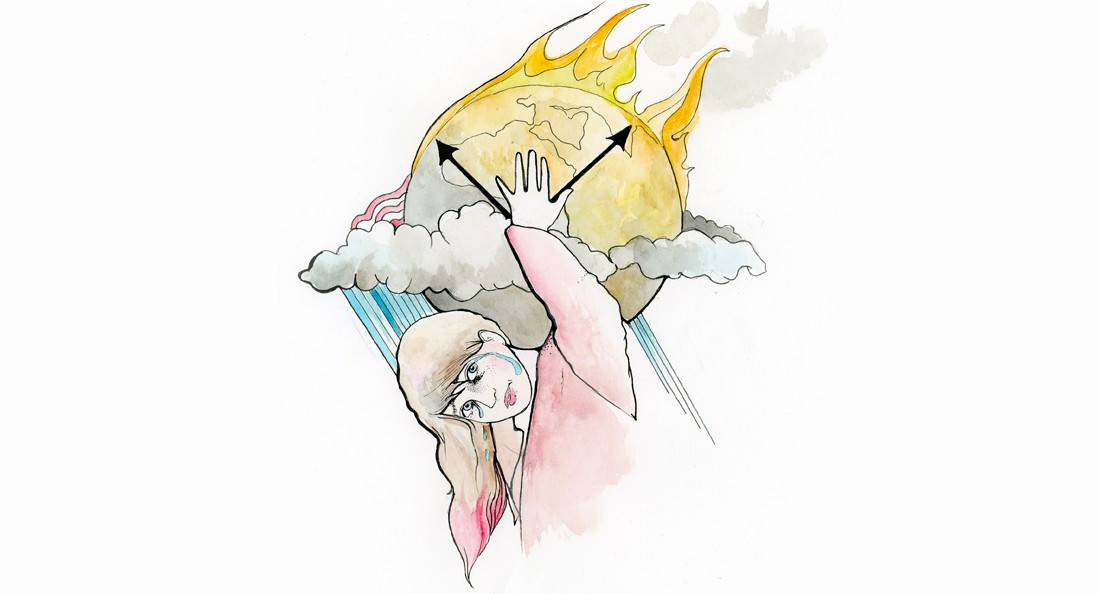Breaking Out of the (Polluted) Clouds of Anxiety
Can anything be saved when the world is literally burning around us?
The Amazon forest is burning. This isn’t a hoax, an alternative fact or an elaborate ruse.
The uncomfortable truth is the forest that is responsible for producing more than 20 per cent of the world’s oxygen supply is burning at an alarmingly high rate. This event is just one of many in the increasing global climate emergency, and it has invoked an almost unequivocal terror across the world.
This anxiety over the potential loss of a planet approxmiately 4.5 billion years old has possibly been induced by the sheer size of the Amazon rainforest, which spans 5,500,000 square kilometres, making up a large portion of South America.
The almost-constant news about the rising fires and the seeming futility of the situation over the past few weeks may make the effects of climate change seem real to people as consumers, students and human beings. It can seem overwhelming to try and figure out how individuals can make even a tiny difference in this global dilemma.
“Climate anxiety” is a term that is increasingly being used to describe feelings of despair about the planet’s situation and a simultaneous inability to channel these feelings productively or to motivate others to act.
An overwhelming sense of doom can make every environmental effort seem pointless and lead to the development of uncontrollable stress. It’s becoming more common in the digital age, as daily updates on wildfires, melting glaciers and habitat loss become all too familiar.
Of course, there are countless small things individuals can do to help. There are ads for purchasing reusable straws that will help save the turtles everywhere. Bans on single-use plastic, such as take-out bags, are increasing as well. People can eat less meat. They can take shorter showers. They can bike to school or work. These are all things that are easy enough to do. So why is this feeling of helplessness sometimes overwhelming?
The answer is probably that even as people do their part via reusable tupperware and water bottles, air, water and plastic pollution is still plaguing the globe. Despite some individuals’ best efforts, there are still many people who choose to do nothing. Can one person really change this reality?
While it can be simpler to accept the futility of the world’s seemingly inevitable doom (which could be in as little as 12 years if nothing changes), in reality the things people do as everyday citizens can and will have a big impact on the environmental future.
A person reducing the amount of meat they eat can turn into a decision that leads them to become completely vegetarian, then vegan. Opting for sustainably made shampoo can lead to a decision to use eco-friendly soap, makeup or hair products as well.
Talking with friends about being environmentally conscious can lead to a decision to participate in a climate protest, meeting like-minded individuals and convincing politicians to take action. These little changes can snowball into movements that have the power to inspire real change.
So yes, looking at the state of Earth can produce feelings of anxiety, discomfort and unrest. But there is nothing productive about succumbing to this despair and choosing to live in (un)blissful ignorance. Instead of accepting the inevitability of climate change, it’s time that people unite within a movement that is made up of both small and big actions. It’s time to allow these efforts to coalesce, so that they begin to resemble something like hope.
Leia is a political science student hoping to incorporate green and sustainable policy into Canadian government.
Anyone interested in more ways to spark change can join the Global Climate Strike on Sept. 27 from 12 to 5 p.m. at the
Manitoba Legislative Building.
Published in Volume 74, Number 3 of The Uniter (September 19, 2019)








